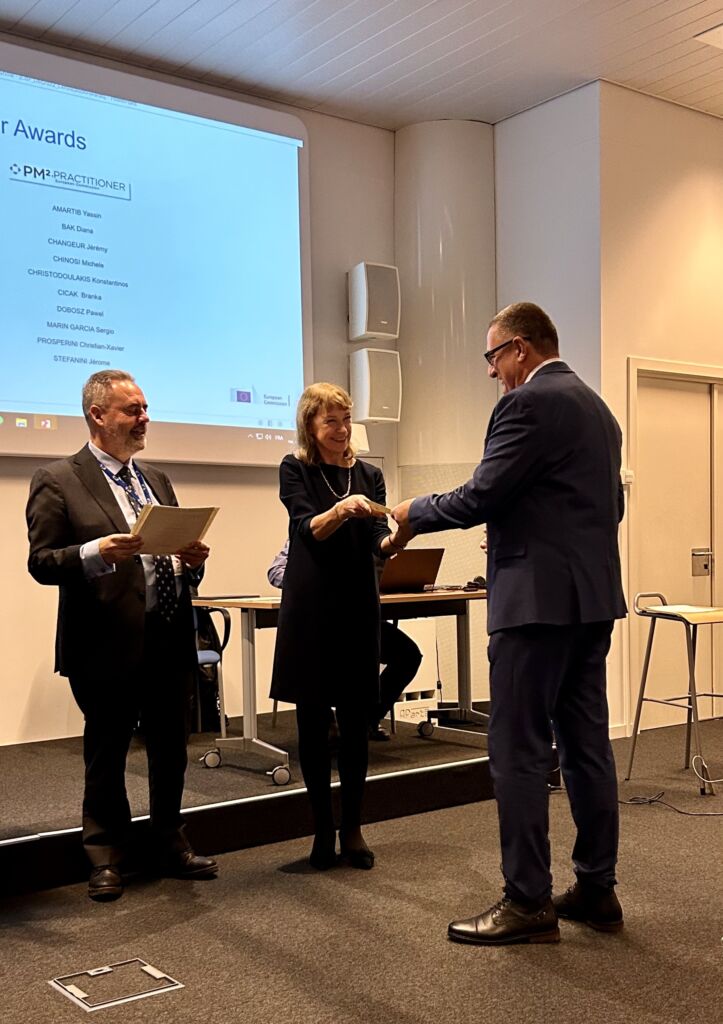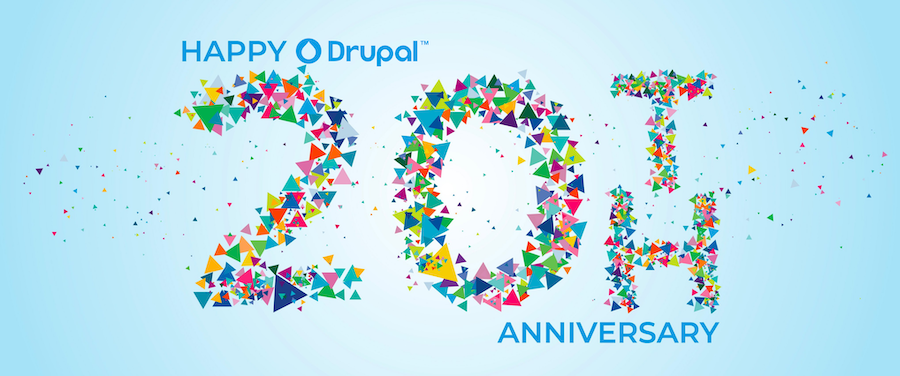
Project Management adventures in cultural projects
Ah, the life of a Project Manager! I’ve spent many years managing various projects, but my heart is closer to the Cultural Projects that I performed back in Greece during the period between 2006 and 2016. It was a wild ride full of ups and downs, unexpected twists and turns, and plenty of lessons learned along the way.
One of the biggest challenges I’ve faced as a project manager was dealing with cultural differences. When working on a project with people worldwide, you quickly learn that only some approach things in the same way. For example, some cultures are direct and to the point, while others are more indirect and polite. Trying to navigate these different communication styles can be tricky, but keeping everyone on the same page is essential.
Another challenge I’ve faced is dealing with artists. Don’t get me wrong; I love working with creative types. They bring a certain energy and passion to a project that’s hard to match. But they can also be…unpredictable. I’ve had artists show up late to meetings, change their minds at the last minute, and even throw tantrums when things don’t go their way. But you learn to roll with the punches and appreciate their unique perspectives.
Of course, digitalisation projects come with their own set of challenges. Technology is constantly evolving, so you must stay on top of the latest trends and innovations. And then there’s the issue of security. I’ve spent many sleepless nights worrying about data breaches and cyber-attacks. When dealing with sensitive information, you need to ensure everything is locked down tight.
But despite all the challenges, there are also plenty of lessons learned. One of the most important is the value of communication. When everyone is on the same page, things go much smoother. And when there are misunderstandings, it’s crucial to address them head-on before they become more significant problems.
Another lesson I’ve learned is to be adaptable. In the world of project management, things can change at the drop of a hat. You need to be able to pivot quickly and develop new solutions on the fly. And sometimes, you have to roll with the punches and hope for the best.
And finally, I’ve learned that a sense of humour goes a long way. When you’re dealing with stressful situations and tight deadlines, sometimes all you can do is laugh. Whether making a silly joke to break the tension or poking fun at yourself for forgetting a crucial detail, some fun can make all the difference.
So there you have it, folks. Ten years of managing cultural, art, and digitalisation projects have taught me a lot. It’s been a wild ride of challenges, unique characteristics, and lessons learned. But at the end of the day, I wouldn’t have it any other way. After all, where else can you work with artists, navigate cultural differences, and stay on the cutting edge of technology simultaneously?
Disclaimer: The views expressed in each blog entry are mine and do not necessarily represent the views of my employer.

The power of kindness and positive action (in workplace)
It is often said that we should strive to impact the world positively, but many people feel overwhelmed by the enormity of the task. They think our society’s problems are too big, too complex, and entrenched for anyone to make a difference.
However, it is essential to remember that even small acts of kindness and generosity can profoundly impact the people around us. Helping even one person can make a significant difference in their life and create a ripple effect that spreads far and wide.
When we help someone in need, we demonstrate our compassion and empathy. We show them that they are not alone in their struggles and that we are willing to lend a hand. This can be a powerful message for someone going through a difficult time, as it can give them hope and strength to keep moving forward. Moreover, when we provide value to someone, we create a bond of trust and goodwill that can last a lifetime. People remember how we made them feel; if we made them feel valued and appreciated, they would likely reciprocate by helping others.
Another benefit of helping even one person is that it can be a way of discovering our sense of purpose and fulfilment.
When we give of ourselves to others, we tap into our inner resources of compassion, empathy, and generosity.
We discover that we have something valuable to offer the world and that our actions can impact the people around us. This can be a transformative experience, giving us a sense of meaning and purpose that we may have missed.
In addition, helping even one person can be a catalyst for positive change in our communities and beyond.
When we take action to help others, we inspire others to do the same. This can create a ripple effect that spreads far and wide as people begin to see the power of their actions to make a difference in the world.
Moreover, when we help others, we often learn more about their challenges and the systemic issues contributing to their difficulties. This can give us a deeper understanding of our society’s issues and motivate us to take action to create lasting change.
In conclusion, giving value and help to even one person cannot be overstated. When we help others, we demonstrate compassion and empathy, create bonds of trust and goodwill, discover our purpose and fulfilment, and inspire positive change in our communities and beyond. So, let us not be daunted by the enormity of our world’s problems but instead focus on making a difference, one person at a time. As the saying goes, “To the world, you may be one person, but to one person, you may be the world.”
Disclaimer: The views expressed in each blog entry are mine and do not necessarily represent the views of my employer.

What i recently learned from Heraclitus about decision making
Heraclitus was a Greek philosopher who lived in the 6th century BC and is known for his famous statement, “You cannot step into the same river twice.” This idea, known as the doctrine of flux, is at the core of Heraclitus’ philosophy and has important implications for decision-making.
Heraclitus believed that everything in the world is constantly changing and that change is the only constant. This means that nothing is ever fixed or static and that we must continuously adapt to new situations and circumstances. We must be flexible and open to further information and perspectives in decision-making.
One of the critical lessons I recently learned from Heraclitus’s study is the importance of embracing uncertainty. Because everything is in a state of flux, so there is always uncertainty in any situation. Rather than trying to eliminate uncertainty, we should learn to embrace it and use it to our advantage. This means being willing to take calculated risks and make decisions based on incomplete or imperfect information.
Another vital lesson from Heraclitus is that opposites are necessary for balance. He believed everything in the world is composed of opposites, such as hot and cold, light and dark, and good and evil. This means that we must consider our options’ positive and negative aspects when making decisions. Rather than viewing decisions as binary choices between good and bad, we should strive to find a balance that considers both sides of the equation.
Heraclitus also emphasized the importance of intuition and inner wisdom. He believed that our inner selves are connected to greater universal wisdom and that we can tap into this wisdom through introspection and contemplation. When making decisions, we should reflect on our wisdom and intuition and use this to guide our choices.
Finally, Heraclitus believed that change is inevitable and that we must learn to accept it. This means we should be open to the possibility that our decisions may not always lead to the outcomes we expect or desire. Rather than becoming attached to specific outcomes, we should focus on the decision-making process and trust that the universe will guide us in the right direction.
Disclaimer: The views expressed in each blog entry are mine and do not necessarily represent the views of my employer.

Benefits realisation: a journey beyond the project success criteria
Organisations increasingly rely on IT projects to achieve their strategic objectives in today’s fast-paced business environment.
However, the success of IT projects is about more than just completing the project on time and within budget. It’s also about realising the expected benefits and delivering value to the organisation. This is where benefit realisation and value stream delivery come into play.
Benefits realisation is the process of identifying, planning, and tracking the benefits of a project. It involves setting specific, measurable, achievable benefits that the project is expected to deliver based on a hypothesis during the scope definitions and then measuring the benefits achieved against those targets. The purpose of benefits realisation is to ensure that the project delivers the expected benefits and that those benefits are sustainable over the long term.
The value stream approach is about delivering value to the organisation by optimising the flow of work from idea to delivery. It involves identifying and removing waste and inefficiencies in the project delivery process and ensuring that the work is aligned with the organisation’s strategic objectives. Value stream delivery ensures the organisation receives maximum value from its IT projects.
Together, benefit realisation and value stream delivery provide a framework for ensuring that IT projects deliver the expected benefits and value to the organisation. Here are some of the benefits of implementing these practices:
- Improved Return of Investment: By tracking and measuring the benefits of a project, organisations can ensure that they are getting a positive return on their investment. This is especially important for large, complex IT projects that require significant resources.
- Increased transparency: Benefits realisation and value stream delivery provide greater transparency into the project delivery process. This helps stakeholders understand the project’s progress, identify potential roadblocks, and make informed decisions about project priorities.
- Enhanced accountability: By setting specific benefits and value delivery targets, project teams are held accountable for delivering on their promises. This helps to ensure that project teams are focused on providing value to the organisation.
- Continuous improvement: Benefits realisation and value stream delivery provide a framework for continuous improvement. By measuring the actual benefits achieved and identifying areas for improvement in the project delivery process, organisations can continually improve the value they receive from their IT projects.
- Improved alignment with strategic objectives: By aligning the benefits of a project with the organisation’s strategic objectives, IT projects can deliver maximum value to the organisation. This ensures the organisation invests in projects aligned with its goals and objectives.
In conclusion, benefits realisation and value stream delivery are essential to successful IT project delivery. By focusing on delivering benefits and value, organisations can ensure that they get a positive return on their investment and that their IT projects align with their overall strategic objectives.
Disclaimer: The views expressed in each blog entry are mine and do not necessarily represent the views of my employer.

The loneliness of the Project Manager
As a project manager, loneliness can be an unexpected and complex challenge. While you may be leading a team and interacting with many people regularly, it’s common to feel isolated and disconnected sometimes.
One reason for this is the high level of responsibility that comes with being a project manager. You are responsible for ensuring the project is completed on time, within budget, and to the required level of quality. This can be a heavy burden to bear, and the weight of it can make you feel alone, even when surrounded by others.
Additionally, project managers often have to make difficult decisions, further contributing to feelings of loneliness. When you make tough choices that may not be popular with everyone, finding people to confide in or seek support from can be hard.
Another factor contributing to loneliness as a project manager is that you often mediate between different departments or teams. You must balance the needs and goals of various stakeholders, which can lead to isolation as you navigate these complex dynamics.
So, what can you do to combat loneliness as a project manager? Here are some strategies to consider:
- Build relationships with your team members: While you may be their leader, fostering camaraderie with your team is essential. Take time to get to know each person individually, and make an effort to connect with them on a personal level.
- Seek out a mentor or advisor: Having someone you can turn to for advice and support can be incredibly helpful when feeling overwhelmed or isolated. Look for a mentor or advisor with project management experience who can offer guidance.
- Join a professional organisation: There are many professional organisations for project managers, and joining one can provide access to a network of peers going through similar experiences. Attend conferences or events to meet new people and expand your professional circle.
- Find a support group: If you’re feeling particularly isolated or overwhelmed, consider joining a support group for project managers. This can be a safe space to share your experiences and get advice from others who understand what you’re going through.
- Take care of yourself: Finally, ensure you’re taking care of your mental health and well-being. Make time for activities that bring you joy, and prioritise self-care practices like exercise, meditation, or spending time in nature.
Being a project manager can be rewarding and fulfilling, but it’s essential to recognise that loneliness can be challenging. By building relationships, seeking support, and prioritising self-care, you can overcome feelings of isolation and find greater fulfilment in your work.
Sources: Photo by Mathieu Bigard
Disclaimer: The views expressed in each blog entry are mine and do not necessarily represent the views of my employer.

PM² Community of Practice and Awarding Ceremony
Participating as a guest speaker at the December Hybrid #PM² Community of Practice and Awarding Ceremony event was exciting.
I was honoured to be awarded the PM² Practitioner Certificate by Veronica Gaffey, Director General for Informatics (#DG #DIGIT)

I am looking forward to more creative challenges as a member of the PM² Community of Practice and leading now by example as a practitioner.
Many thanks to the whole team in the PM² Center of Excellence #CoEPM2 for this event and their support. Marc Berghmans, Elias Michelioudakis, Greg Whye.
#pm2 #methodology #europeancommission
Disclaimer: The views expressed in each blog entry are mine and do not necessarily represent the views of my employer.

The power of Software Branding
In software development, most people would talk about the technical parameters – detailed planning, quality measures and criteria, ongoing support and maintenance. While they are all important to the success of an application, they wouldn’t get anywhere without the seamless delivery of non-programming elements – branding, UX, and UI design.
Branding is the emotional positioning of a product as perceived by its customers. Product branding is achieved through a combination of factors, including the product name and logo, use of colour, text, graphics, and sound, the style of various other design elements, marketing, and most importantly, the attributes of the product experience itself.
It takes years of hard work to build a positive brand image, and even more hard work to maintain it, but a company’s brand all starts with great design.
On the other hand, the goal of software branding is to associate the brand with the style and quality of the product and its experience. Too often, developers attempt to achieve this by drawing attention to the program itself. The result is to distract users instead of delight them.
When well done, software branding has these attributes:
- Establishes a clear, distinct style and personality.
- Creates an emotional connection.
- Has high quality.
- Is strategically placed and consistently executed.
- Aligns to the overall brand strategy.
- Is long-lasting...as enjoyable the thousandth time as it was the first.
Branding and design is what translates the ideas into communication. And many designers will work through both the strategy and the implementation to ensure that the results are consistent, adaptable and in-keeping with your original brand attributes.
Disclaimer: The views expressed in each blog entry are mine and do not necessarily represent the views of my employer.

Digital Transformation hot trends and needs
The post-pandemic situation we live in is moving towards a digital fever mentality. Companies that will succeed will be those that create intelligent experiences and customer journeys that facilitate and complement people’s lives. Companies that will fail will be those that don’t seek to benefit from new AI technologies and don’t take advantage of data to anticipate trends in demand and make decisions that improve the workforce.
This is reflected in the technology trends emerging across every industry, all of which are geared toward delivering improved user experiences and innovation at speed.
Digital Transformation can refer to anything from IT modernisation (for example, cloud computing), to digital optimisation, to the invention of new digital business models. The term is widely used in public-sector organisations to refer to modest initiatives such as putting services online or legacy modernisation.
(Gartner-Definition of Digital Transformation)
Trend #1: The future of work will be built on a connected, hybrid experience
The workplace has rapidly evolved, and with it, employee expectations — forcing organisations to deliver digital-first and connected experiences to drive productivity and retain talent.
Trend #2: The composable business matures
As the pressure to innovate faster continues to rise, organisations will seek even greater agility, leading to an increased drive to composable and event-driven architectures.
Trend #3: The rise of the business technologist
With the increasing pressure of the digital imperative on organisations, business technologists will come to the fore as an essential partner in IT departments’ efforts to accelerate innovation.
Trend #4: Hyperautomation unlocks digital value
Hyperautomation will unlock productivity, accelerate time-to-market, and transform employee and customer experiences.
Enterprise architecture (EA) is a discipline for proactively and holistically leading enterprise responses to disruptive forces by identifying and analyzing the execution of change toward desired business vision and outcomes.
(Definition of EA on TOGAF Framework)
Trend #5: Security-by-default is a must-have
Security-by-default will become a need-to-have as organisations increasingly realise their applications and automations are only as secure as the composable blocks on which they are built.
Trend #6: The rise of hybrid, distributed ecosystems adds complexity
As the digital world embraces hybrid and multi-clouds, finding a universal way of integrating and managing these environments will become essential to successful digital transformation.
Trend #7: A single source of truth becomes key to the data-driven business
As digitisation continues to drive an increasing amount of data, organisations will seek a single source of truth where consumers can get the right data in the right context at the right time.
REFERENCES:
1. Open Group | TOGAF 9.2 Framework
2. Mulesoft Research: Top 7 trends shaping digital transformation in 2022
3. Gartner: The importance of digital transformation for the industry
Disclaimer: The views expressed in each blog entry are mine and do not necessarily represent the views of my employer.

COVID Days: 1 year after
It was only one year ago when we started this internal journey inside COVID-19 era.
We spent many days working, implementing new projects, feeling the thrill of deploying new things, listening new music albums, playing games with the family, enjoy the old movies from my favorites directors, creating new digital apps, thinking from inside outside, reading books, cooking, eating breakfast, brunch, lunch and dinner with the family...
But still...one thing is missing, the smell of the community.
We will meet again one sunny day.
Disclaimer: The views expressed in each blog entry are mine and do not necessarily represent the views of my employer.

Drupal 20th birthday and the nostalgia from my engineering days
It was January 2001, exactly 20 years ago, when Drupal was released as version 1.0.0. And I still remember these engineering days back in Greece, working at nights between the new fancy CMSs, the Web Services, and the xCBL schemas. These enthusiastic days and nights…
I remember with nostalgia my software engineering days in Athens, working in cosmoONE. It was the beginning of what we now call Web Services, but then we were so fascinated about this new world of different technologies and the code itself. These were the days of wine and roses, the beginning of the new century, the wonderful world of eCommerce and the e-MarketPlaces, and the impressive world of fully integrated systems. We were deep concentrated then on Java world, the big systems, the ocean of the source code of Commerce One.
I still remember that night back in 2003 when I read about this new Content Management Framework called Drupal. I was impressed then by Mambo, PHPNuke, and later by Joomla! and WordPress, which were easy to use and flexible. But Drupal was something more: intelligent and promising. That was my new software engineering toy, to play and tweak.
I remember that the world was not ready for that drupy and its’ hardcore features. I still remember that Joomla and WordPress were more popular, more simple. Drupal was suitable for the nerds.
I liked the simplicity of WordPress, I liked the expandability of Joomla, but Ioved the hierarchical taxonomy system of Drupal (and TYPO3).
These were my software engineering days, the days of the Integrations, the opening to a new long and winding road…
Then I loved the web design, but that’s another story.
Happy birthday Drupal, you were always my intelligent friend, my gig alter-ego.
